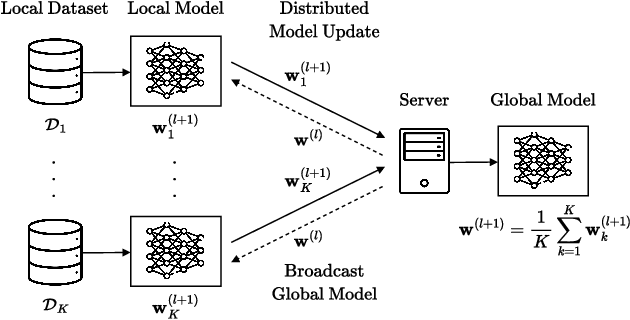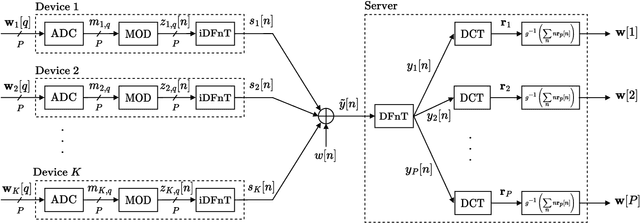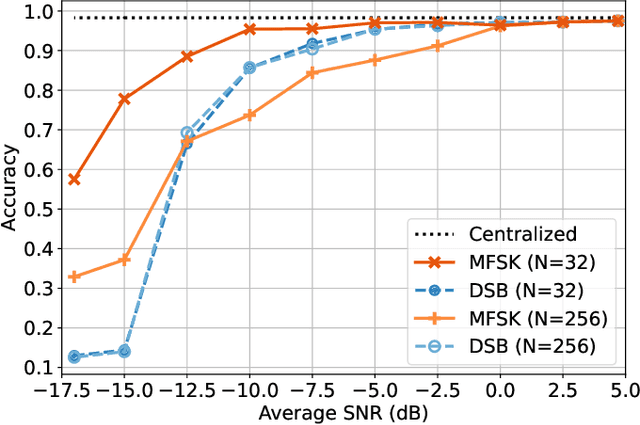Frequency Modulation Aggregation for Federated Learning
Paper and Code
Jun 28, 2023



Federated edge learning (FEEL) is a framework for training models in a distributed fashion using edge devices and a server that coordinates the learning process. In FEEL, edge devices periodically transmit model parameters to the server, which aggregates them to generate a global model. To reduce the burden of transmitting high-dimensional data by many edge devices, a broadband analog transmission scheme has been proposed. The devices transmit the parameters concurrently using a linear analog modulation, which are aggregated by the superposition nature of the wireless medium. However, linear analog modulations incur in an excessive power consumption for edge devices and are not suitable for current digital wireless systems. To overcome this issue, in this paper we propose a digital frequency broadband aggregation. The scheme integrates a Multiple Frequency Shift Keying (MFSK) at the transmitters and a type-based multiple access (TBMA) at the receiver. Using concurrent transmission, the server can recover the type (i.e., a histogram) of the transmitted parameters and compute any aggregation function to generate a shared global model. We provide a extensive analysis of the communication scheme in an AWGN channel and compare it with linear analog modulations. Our experimental results show that the proposed scheme achieves the same performance, although it requires 14 dB less in peak-to-average power ratio (PAPR) than linear analog modulations.
 Add to Chrome
Add to Chrome Add to Firefox
Add to Firefox Add to Edge
Add to Edge